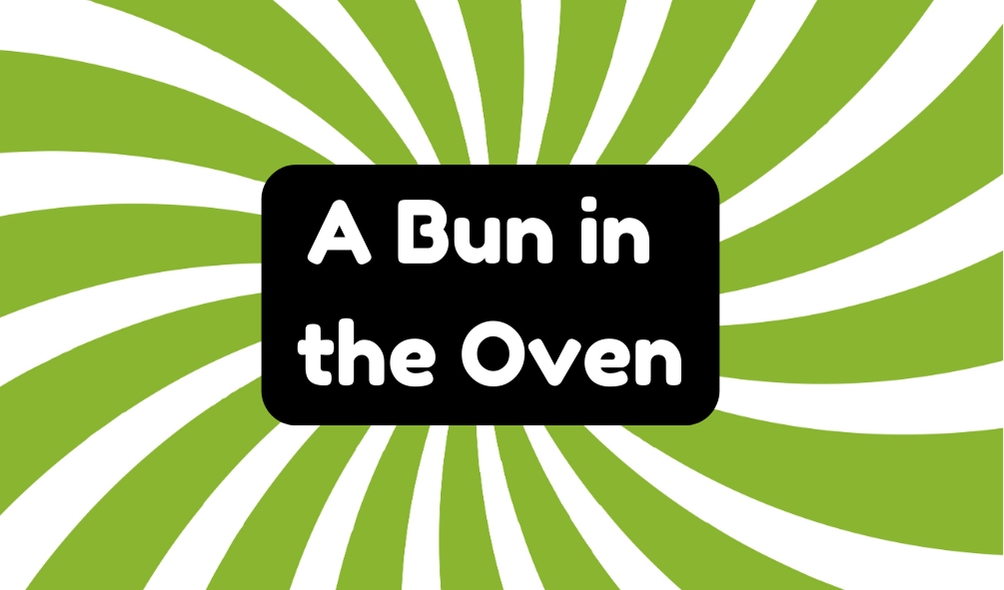"A bun in the oven" is a lighthearted euphemism for pregnancy. It reflects a playful cultural attitude towards childbirth, originating from the 20th century. This phrase exemplifies how language can soften serious topics, creating a sense of comfort among friends. However, using it requires awareness of context, as informal expressions may not suit all audiences. Understanding its origins and implications is important for effective communication. Further exploration reveals additional insights into this commonly used saying.
Synonyms
When discussing the phrase "a bun in the oven," it is important to recognize its various synonyms that convey the same idea of pregnancy. These pregnancy euphemisms, while playful, might mask the reality of what being an expecting bundle truly entails. Acknowledging their colorful variety offers insight into society's approach to such a significant life change:
- In the pudding club
- Up the duff
- Expectation station
- With child
- Preggers
These expressions reflect cultural attitudes, where humor often overshadows the serious implications of new beginnings. By examining these terms, one can better understand societal perceptions attached to pregnancy.
Example of Sentences
The phrase "a bun in the oven" serves as a lighthearted euphemism for pregnancy, but its usage can sometimes overshadow the profound realities that come with expecting a child. In various contexts, this idiom can reflect the excitement and challenges associated with pregnancy announcements. For instance:
- "She casually mentioned her bun in the oven."
- "Their pregnancy announcement was met with joy."
- "His idiomatic expressions felt too flippant for such news."
- "Knowing about the bun made everything feel more real."
- "The excitement of a new life brought them closer together."
Understanding the depth beyond these phrases is essential.
Origin
Exploring the origins of the phrase "a bun in the oven" reveals an interesting blend of cultural references and linguistic evolution. Its phrase etymology hints at possible links to the imagery of baby bunnies, while other euphemisms for pregnancy may share developmental roots. Documented usage first appeared in the 20th century, particularly in Nicholas Monsarrat's 1951 novel, "Cruel Sea." This phrase's rise can be attributed to cultural interpretations that connect familiar domestic imagery with the intimate aspect of pregnancy. Such associations reflect broader societal attitudes towards childbirth, warranting examination in today's evolving linguistic landscape.
Collocations
While many phrases, like "a bun in the oven," may appear straightforward at first glance, a closer look at their collocations reveals the delicate interplay of language and meaning. Understanding collocation examples in idiomatic expressions helps decode subtle nuances. The phrase connects to common domestic themes, embodying cultural references that resonate deeply.
- Cooking techniques
- Household warmth
- Family growth
- Expectation and anticipation
- The cycle of life
These associations amplify the phrase's richness, prompting reflection on how collocations shape our perception of familiar concepts. In a world replete with language, recognizing these relationships is critical for effective communication.
How to Use in Everyday Language
Using the phrase "a bun in the oven" in everyday language can be straightforward, yet it warrants careful consideration of context. While this creative expression succinctly conveys pregnancy, it also carries cultural significance that may not be universally understood. Context is key; using it in casual conversations among friends is different from discussing it in formal settings. The term can evoke humor but may also offend when misapplied. As a result, individuals should weigh their audience and situation thoughtfully. By doing so, they can appreciate the phrase's rich background while maneuvering its use with emotional and cultural sensitivity, fostering clearer communication.
Why Is It Still Relevant Today?
Why does the phrase "a bun in the oven" continue to resonate in contemporary discussions about pregnancy? Its cultural significance lies in its playful euphemism, offering a lighthearted approach to a serious topic. Modern reinterpretations connect this expression to discussions around reproductive rights, emphasizing both the joys and challenges of parenthood. However, some argue that such euphemisms can trivialize the complexities of pregnancy. In today's dialogue about women's health and autonomy, the phrase prompts reflection on societal attitudes toward childbirth. Ultimately, its persistence highlights the balance between tradition and modern perspectives in understanding the journey of motherhood.







